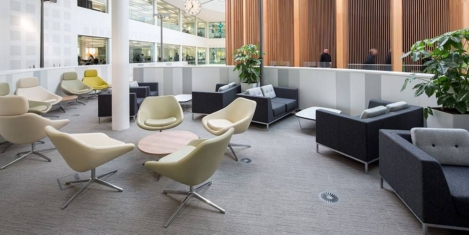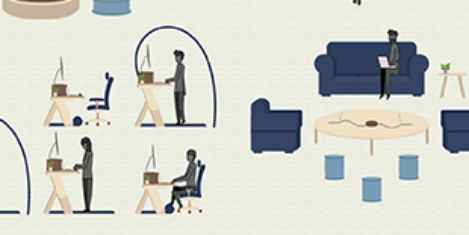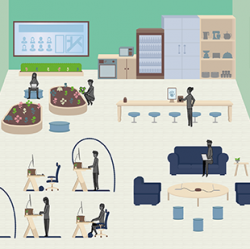February 3, 2017
Higher levels of uncertainty blamed for drop in UK commercial construction activity 0
Commercial construction activity in the UK for the 12 months to the end of 2016 fell to £16.7 billion, down 14.1 percent on the previous quarter, according to JLL and Glenigan’s Q4 2016 UK Commercial Construction Activity Index. In London, activity declined in a quarterly comparison but increased 2.7 percent compared to the same period a year ago. Construction started at 22 Bishopsgate in London City which will provide a total of 1.3 million sq ft of office space, and is scheduled to complete in 2019. The 70,000 sq ft office refurbishment of 33 Gutter Lane also commenced in Q4 with completion scheduled for the second half of the year. Elsewhere it was a mixed picture across the regions with commercial construction activity increasing in the North East, South West and Wales, albeit from a relatively low base; but activity was more subdued in other regions, particularly in Yorkshire and the Humber were the level of construction activity fell 22.0 percent y-o-y.




























 Amos Tversky and Daniel Kahneman introduced the concept of Loss Aversion in 1984, highlighting people’s tendency to strongly prefer avoiding losses to acquiring gains. Most studies suggest that losses are twice as powerful, psychologically, as gains. Lose £100 and we will feel a remorse that easily outweighs winning £100. In a similar fashion we find it very hard to see future positives when confronted with short term loses. We understand easily what we have lost but cannot imagine what there is to be gained. Furthermore, as Frederic Bastiat wrote in an 1850 paper, “That Which is Seen, and That Which is Not Seen”, man has a tendency to “pursue a small present good, which will be followed by a great evil to come, rather than a great good to come, at the risk of a small present evil”. Put these together and it is no wonder that, by and large, the future of work, corporate real estate and the workplace is so widely misunderstood.
Amos Tversky and Daniel Kahneman introduced the concept of Loss Aversion in 1984, highlighting people’s tendency to strongly prefer avoiding losses to acquiring gains. Most studies suggest that losses are twice as powerful, psychologically, as gains. Lose £100 and we will feel a remorse that easily outweighs winning £100. In a similar fashion we find it very hard to see future positives when confronted with short term loses. We understand easily what we have lost but cannot imagine what there is to be gained. Furthermore, as Frederic Bastiat wrote in an 1850 paper, “That Which is Seen, and That Which is Not Seen”, man has a tendency to “pursue a small present good, which will be followed by a great evil to come, rather than a great good to come, at the risk of a small present evil”. Put these together and it is no wonder that, by and large, the future of work, corporate real estate and the workplace is so widely misunderstood.






